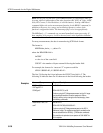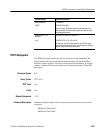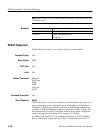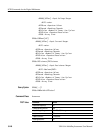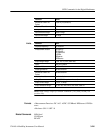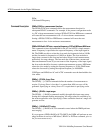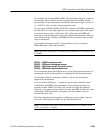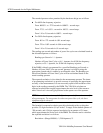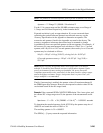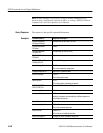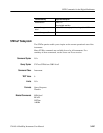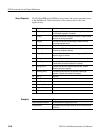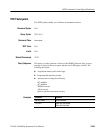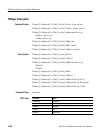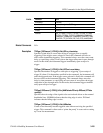
SCPI Commands for the Digital Multimeter
3–244
VX4101A MultiPaq Instrument User Manual
The rounded aperture values permitted by the hardware design are as follows
H For 60 Hz line frequency rejection:
From .000833... to .2725 seconds in .000833... second steps.
From .2733... to 1.0933... seconds in .00333... second steps.
From 1.10 to 2.0 seconds in .00833... second steps.
H For 50 Hz line frequency rejection:
From .001 to .273 seconds in .001 second steps.
From .276 to 1.092 seconds in .004 second steps.
From 1.10 to 2.0 seconds in .01 second steps.
The readings per second and number of power line cycles are calculated based on
the allowable aperture as follows:
Readings per Second = 1. / Aperture.
Number of Power Line Cycles = 60. * Aperture, for 60 Hz line frequency
rejection, or 50. * Aperture, for 50 Hz line frequency rejection.
If the DMM is directly programmed for a specified Readings per Second, or
Number of Power Line Cycles per second, aperture is solved for using the
appropriate formula above, rounded to an allowable value. The Readings per
Second and Number of Power Line Cycles will be recalculated based on the
actual resulting aperture.
The expected resolution is also related to the measurement aperture. The intent
of programming resolution is to provide a means of specifying the approximate
accuracy of the measurement. It is not necessarily equal to the resolution of the
digits in the readings returned by the DMM. The VX4101A calculates an
expected resolution that roughly approximates the noise level of the measure-
ment. Noise level is inversely proportional to the square root of the aperture.
NOTE. For read back consistency, 5.5 digits in exponential format is returned for
all measurements. For an aperture less than one power line cycle, the least
significant digit is always 0.
The formula for expected resolution uses this relationship with a scaling that
provides 5.5 digits resolution (10 mV in the 3 V range) for the default aperture of
.200 seconds, and 4.5 digits expected resolution for an aperture of 2.0 msec,
which approximates the noise level of the DMM. The formula used to calculate
the expected resolution is as follows.
Resolution = (Range/300000.) * (.200/Aperture)^.5



